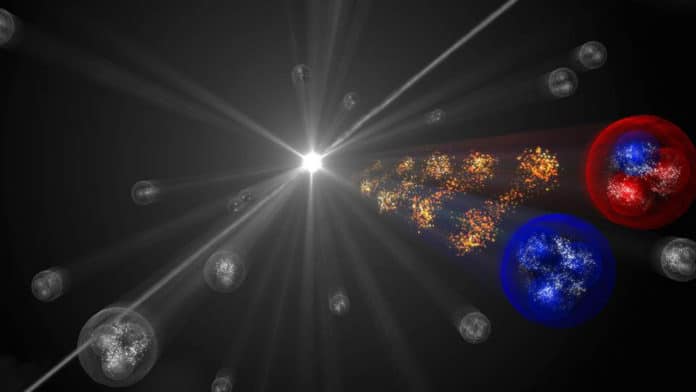In nuclear physics and particle physics, the strong interaction is the mechanism responsible for the strong nuclear force and is one of the four known fundamental interactions. It is essentially responsible for the existence of atomic nuclei that consist of several protons and neutrons. Protons and neutrons are made up of smaller particles, the so-called quarks. And they too are held together by the strong interaction.
Understanding the strong interaction between particles is one of the biggest challenges in nuclear physics today. Experiments to determine the strong interaction are extremely difficult because hyperons are unstable particles rapidly decaying after production. This difficulty has so far prevented a meaningful comparison between theory and experiment.
Scientists at the Technical University of Munich (TUM) have developed a method to determine the strong interaction with high precision. The measurements are groundbreaking, as well as the key to understanding neutron stars.
The method developed by scientists has taken a step towards high-precision studies of the dynamics of the strong force at the Large Hadron Collider (LHC).
The story began four years ago. Prof. Laura Fabbietti, professor for Dense and Strange Hadronic Matter at TUM, proposed to employ a technique called femtoscopy to study the strong interaction at the ALICE experiment. The technique allows investigating spatial scales close to 1 femtometer (10-15 meter) – about the size of a proton – and the strong-force action’s spatial range.
Using that technique, scientists managed to study the experimental data for most of the hyperon-nucleon combinations. They also successfully measured the strong interaction for all hyperons’ rarest, the Omega, consisting of three strange quarks. Later, they came up with their framework that can produce theoretical predictions.
Prof. Fabbietti said, “My TUM group has opened a new avenue for nuclear physics at the LHC, one which involves all types of quarks, reaching an unexpected precision in a place nobody has looked so far.”
Journal Reference:
- ALICE Collaboration: Unveiling the strong interaction among hadrons at the LHC. Nature, 588, 232–238 (2020) – DOI: 10.1038/s41586-020-3001-6
